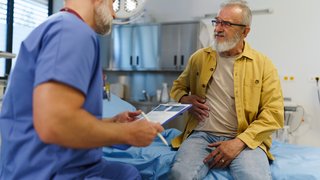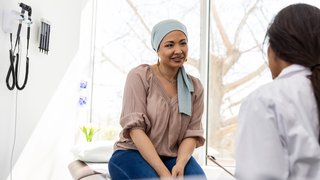
Dense breast tissue is a well-established risk factor for developing breast cancer. Women with high breast density are four to six times more likely to develop breast cancer than women with low breast density.
But for some women with this riskier tissue type, it may be difficult to decide whether they need more tests in addition to their mammograms. To shed light on this question, recently a study published in the Annals of Internal Medicine and reported on in The New York Times found that only about half of women with dense breast tissue would benefit from additional testing.
How many women have dense breasts?
It’s a fairly common condition. An estimated 43 percent of women in the U.S. between the ages of 40 and 74 have dense breasts. Breast cancer is more difficult to detect in these women because the dense tissue may mask the disease.
At the Center for Breast Care – located at UT Southwestern Medical Center’s Harold C. Simmons Comprehensive Cancer Center – all women having a mammogram receive a letter informing them whether or not they have dense breast tissue. Breast imaging physicians can discuss appropriate screening with them and refer them for a more detailed analysis, if necessary.
Do I need extra tests?
All women with dense breast tissue potentially benefit from additional testing. Increasing age, a strong family history, race/ethnicity, and prior breast biopsy are factors that elevate their risk. Women with these associated risks and dense breast tissue may benefit the most.
For high-risk women, the Center for Breast Care offers additional screening using tomosynthesis (3D mammogram), ultrasound, and MRI. All of these tests have been shown to increase the cancer detection rate in high-risk women compared to mammography alone.
How do I know if I’m at risk?
Talk with your doctor. Family history is the most important risk factor for breast cancer. Not only is maternal history important, but also the paternal side plays a role, particularly if a genetic mutation is suspected. In the recent study, an interactive risk calculator tool was used to estimate women’s five-year risk of developing invasive breast cancer.
It may be appropriate for women with elevated risk to begin screening earlier than age 40, depending on their risk level and family history. Generally, a woman’s breast tissue becomes less dense with age; however, some women’s breast tissue remains dense throughout life.
To schedule a breast cancer screening exam at UT Southwestern, call 214-645-8300.











